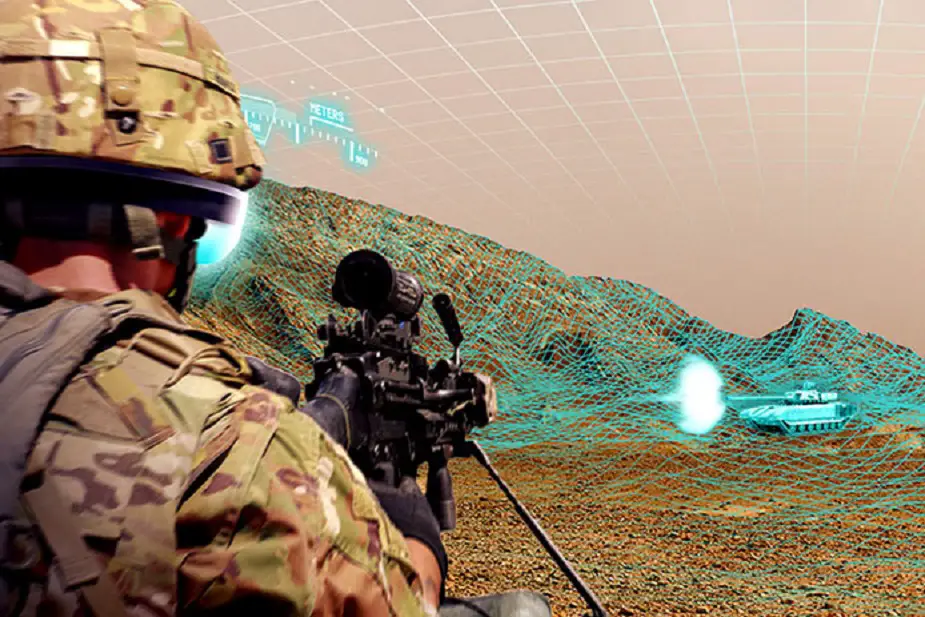US Defense looks toward AI to help train troops
The Defense Department wants to use AI for a wide range of applications, including predictive maintenance, image analysis, cybersecurity and training. The U.S. Army will use AI-enhanced training to improve military readiness and help troops remain ready to “fight tonight,” according to several Raytheon experts in the field.

"We will use AI-enabled information, tools, and systems to empower, not replace, those who serve," according to the DoD's artificial intelligence strategy, released in February (Picture source: Raytheon)
The biggest benefit of AI in military training is the introduction of more realistic scenarios,” said Corey Hendricks, senior solutions architect at Raytheon. “The ultimate vision is to create a dynamic environment that forces the users to adapt as the training adapts and changes.”
AI presents several potential advantages over one-size-fits-all methods such as uploading training materials online or focusing on rote memorization. With AI technology, training can adapt more readily to the individual learners. An AI-based adaptive learning experience will recognize the individual learner’s strengths and weaknesses, and provide the material best suited for that soldier.
“The Holy Grail in training is to be able to have clear measures of effectiveness,” Hendricks said. “How well did you get the material? Are you more prepared to do your job?”
AI allows for more-informed performance assessments, and reduces subjective judgments, according to Hendricks.
“Instead of giving you a test at the end of the course, we can measure and monitor how well you’re doing during throughout the entire course, and then automatically adapt the training based on your performance," he said. “The whole course is closer to real life.”
When combined with virtual reality or augmented reality, AI can also make high-consequence training and mission rehearsals far less dangerous and less expensive than traditional force-on-force or live-fire training, according to Malachi Lawson, Raytheon’s technical director for Global Training solutions. It can also cut the time needed to develop new training scenarios.
“Whether the scenarios involve room-clearing, marksmanship or even engaging with locals, AI reduces the amount of manual editing of scenarios,” said Lawson, adding that AI can even provide virtual avatars that soldiers must identify as either friend or foe.
“With AI and machine learning, we can simulate social media posts so that our soldiers understand the political climate,” Hendricks said. “That way, they can be prepared for civil unrest or possible rioters.”
Similarly, AI and ML provide soldiers with training in cultural awareness, according to Hendricks. If a battalion is deployed suddenly, AI can help soldiers learn about and interact with locals.
“I foresee having an AI-powered intelligent tutoring bot with an avatar pop up on your mobile device and fill you in on the current political climate, the country’s economic state and latest significant events,” he said.
In the not-so-distant future, Hendricks envisions, hyper-engagement AI tools will follow an individual and remain always on. It will learn its subjects' likes, dislikes, habits and daily routine. The longer it interacts with an individual, the more it learns and the better it is able to give recommendations toward better decisions.
Hendricks anticipates using AI and ML to help commanders on the battlefield, giving them, at their fingertips, the Army’s combat doctrine and knowledge from the Center of Army Lessons Learned.
“The military has tons of doctrine — everything from how to wear your uniform to complex multi-domain operations,” Hendricks said. “Now, if I had machine learning and AI read all that doctrine and all those lessons learned, then I was faced with a situation where I had to attack the enemy, I could use my AI-powered intelligent tutor to help plan and prepare for the attack.’”
Raytheon has already inserted artificial intelligence into current training programs, including the U.S. Army Joint Multinational Readiness Center in Germany.
"We've creating bots to manage lower-level logistics tasks that will ultimately make more training aids and gear available at the right times," Lawson said. "Those tens of thousands of solders need a lot of training equipment and artificial intelligence makes sure it’s available."
Raytheon is also taking the data from those devices and using AI to analyze the exercises and make recommendations to improve training.
"Intelligent bots allow us to automate the handling of lower-level logistics tasks and ultimately make more training aids and gear available at the right times,” Lawson said. "Those tens of thousands of soldiers need a lot of training equipment, and AI can ensure that it’s available.”


























